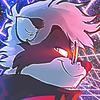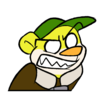Sign In
Close10 Tips for Artists to Get in the Zone by jonas

10 Tips for Artists to Get in the Zone
Disclaimer: I am not a certified professional anything. I've just been faced (for years now) with the task of getting my mule-stubborn artistic brain to fill a page on demand. These are methods I've found work for me; consider them as a starting point and build your own methods from there.
Prepare as much as possible beforehand to preclude interruptions.
You know what to do. Do your business, eat something light, drink enough water, etc. Take care of hardware/software issues as much as possible beforehand. Do not get bogged down in searching for new brushes or program updates or whatever. Don't fiddle with your existing settings; either do that before you start or just have presets loaded. Test all of your drivers and plugins and whatnot before doing the first drawing. Wear something comfortable and casual, if your work environment permits. If necessary, let folks know that you're going to be hitting the art grind for [x] number of hours, and that you aren't to be disturbed unless it's an emergency. Basically, think of any ancillary step that can bog you down or stop the art process completely, and get as much (if not all) of it done beforehand.Close all the windows.
First and foremost, understand that your brain WILL try to sabotage you during the art process -- and worse yet, it will attempt to do it in insidiously subversive ways. When you're experiencing any inertia before or during the creative session, any obstacle that might threaten to kick you out of the zone, you will feel that seductive itch to seek distractions. Therefore, eliminate what distractions you can beforehand. No games, no time-killer websites or social media, or anything else. Only what you need open. Character reference pics, text descriptions, references for anatomy, architecture, texture or objects? You need those. E-mail or chat for communicating with your client? You need that. Facebook and Twitter? Nnnnope. Youtube? Definitely not. Any forum where fans are arguing about any genre/franchise you like? STAY AWAY. Use a plugin like Leechblock if you must. Whatever keeps you off that stuff. Distractions are fine for when you're stuck in a waiting room, and disastrous when you want to be in Getting It Done Mode.Make your warmups fun.
Warmups should certainly be relevant, but they needn't be boring. Draw characters you love in styles you hate. Make up a new species of kaiju and then draw what it'd look like as a cute little baby. Make faces in the mirror and then sketch and exaggerate those expressions on paper to the point that you're drawing nightmare fuel. Cultivate a list of warmup sites and tailor your warmup to the task at hand. Are you going to be drawing fists? Sketch some hands. Make your warmups fast and reflexive -- don't get into details right away. Make sure your warmup has a strict time limit, but within that space, don't impose any additional limits. While you're warming up, have fun, and revel in it.Find the right sound.
Sound can be a major factor, potentially either positive or negative, in an artist's process. Some sounds will derail your train of thought, others will calm you down just the right amount to draw, and others will put you to sleep. This varies from artist to artist, but if there might be some sound out there that enhances your creative mood and makes it easier to draw, then you should try to figure out exactly what it is. Maybe it's gray noise, or reruns of the x-Files in the background, or tribal drumming, or rainfall. Maybe it's the hum of coffee shop conversations, or clicky bleepy electronica, or the purring of a cat. Find something that soothes but doesn't distract, and use headphones if you can. Start it during your warmups and just listen. You'll know it's working when you don't really consciously notice it anymore.The big picture is really just a lot of little pictures.
A project might fill you with dread solely because you're imagining the entire process from start to finish, like staring up at the summit of a mountain. This is especially true if there are steps in it that might result in setbacks (like an eleventh-hour request to re-do a substantial part of it) or steps that take you out of the comfort zone (uh-oh, you're gonna have to draw Byzantine armor and weapons and it has to look PERFECT, right down to the little glints of the mail on the hauberk). An artist's brain can potentially whip itself into a panic thinking about this stuff too much. The best solution I've found is to forcibly narrow the focus. Allow your mind to parse only one step at a time rather than contemplating the big picture. This is, of course, easier said than done. It's not easy to Not Think About Something, because typically trying not to think about it means you are actually thinking about it. Ultimately, the only way to do it is to consciously choose to do it, and learn the discipline to make it easier over time.Find your optimal pace.
You shouldn't go without breaks, but the real trick is figuring out the ideal frequency and length of breaks. Too long and it'll be harder to jump back into things; too short and it won't feel like a real break. This takes experimentation and discipline, since sticking to break intervals isn't as easy when there's no boss around. Consider downloading an interval timer application for your phone (or tablet, or desktop), one that allows you to create cycles where you alternate between work and break periods of different lengths. (For example, 45 minutes working, 15 minutes on break.) Whatever you choose, commit to it. If you're doing a 15-minute break, don't put on a half-hour TV show, no matter how funny it is. If you're on a creative streak, DO NOT skip your break interval just because you're scared you'll lose the edge if you stop. Take the time to decompress. Your brain needs it more than most artists consciously realize.If it's not working, SWITCH.
Ever get that grindy feeling where you can see something's coming out wrong, but you can't visualize how to make it right? Of course you do. We all do, even the most seasoned artist. You basically have two choices -- keep trying different things until something feels right (which works sometimes), or switch gears and work on something else. Maybe something smaller in scale than the main attraction. If you have no other assignments, go back to your warmup list and do more practice exercises. Sometimes, even on a deadline, you have to switch. (In that case, just make sure your switching is carefully timed, just like break intervals.) Trust in your subconscious; it WILL continue to work on the visual/conceptual problem in the main piece. Ever have the experience where you come back to a pic a day later and it looks intangibly different somehow? That's because your brain is constantly parallel-processing LOTS of stuff all the time, and you're not even aware of it. If getting over the wall really matters to you, your brain will find a path. It just might not be obvious in the heat of the moment.If it's REALLY not working, take a walk or a power nap.
Sometimes, the grind wins out and breaks or switching just aren't enough. How much you can get away with at this point has everything to do with your work environment and how much time you have, unfortunately, but it's obvious you need to change things up somehow. Sometimes your brain needs a total break from the work train, even if it's just a short one. If you're working at home, take a power nap. Set an alarm and don't doze for longer than an hour. Or take a walk (although again, not longer than an hour or so). Bring your sketchbook and do some quick life studies, maybe. We're animals who isolate ourselves from the natural world and stare at little flickering screens for hours on end, so yeah, it's gonna get to you eventually. Feeling this way doesn't mean you're broken or that you've lost the day; it just means your mind needs a little more time to rebound.Know yourself.
This is a frustrating bit of advice, since it's generally considered more of an aphorism than a practical guideline. However, no two artists are the same. We come into this game for different reasons, with thoroughly different mindsets, different goals...and different hangups. If you've eliminated physical, environmental and logistic factors, what remains are the psychological ones. These are the hardest things to examine, because sometimes they're just damn ugly and irrational, and it'll often feel like that kind of abstract baggage shouldn't intrude into an everyday activity like art. Don't turn it into a big Freudian couchfest, but permit yourself a degree of detached self-analysis. Ask yourself the tough question: what exactly about the task of doing a particular commission is causing you anxiety, and why? Is it one particular step? Does something about the step trigger thoughts about something ELSE that's causing you anxiety? What can you do to alleviate the anxiety for now and/or make the step easier? The root cause and answer will be different for everyone, but when it comes to art block, I've always found that it comes down to one factor (or a little cloud of related factors), and it's better to face it and be honest about it than slam your brain repeatedly against a blank canvas.If all else fails, there's always tomorrow.
There will be times where, no matter how hard you try, no matter WHAT you try, you can't get in the optimal zone. You usually have a choice at this point: either do your best you can today and live with it, or throw the day and do something else. Biological stuff (not having eaten enough, low blood sugar, fatigue, muscle tension, electrolyte imbalance, neurochemistry, dehydration, hormonal cycles, etc) WILL hobble you sometimes despite your best efforts, and there'll just be no way to get your A-game going that day. However, whether you keep going or stop, it's important to not beat yourself up. You're human, you're doing your best under the circumstances, and there's still tomorrow. Just make sure you commit to it and prepare for tomorrow, today.
Just jotting down a few more ideas for artists. You may notice that some of these overlap with my previous 10 tips to avoid burnout. This list is kind of a day-to-day implementation of the same basic philosophy. Maintenance practices are vital, but there are also more immediate things artists can do, especially when you've got a lot on your plate and a tight deadline and you can feel the first little whispers of panic setting in. I'm not a professional, so please take what I say with a grain of salt.
Submission Information
- Views:
- 1420
- Comments:
- 4
- Favorites:
- 49
- Rating:
- General
- Category:
- Literary / Other








Link
Velantian
#10. As a large format photographer I have had to learn patience above all else.